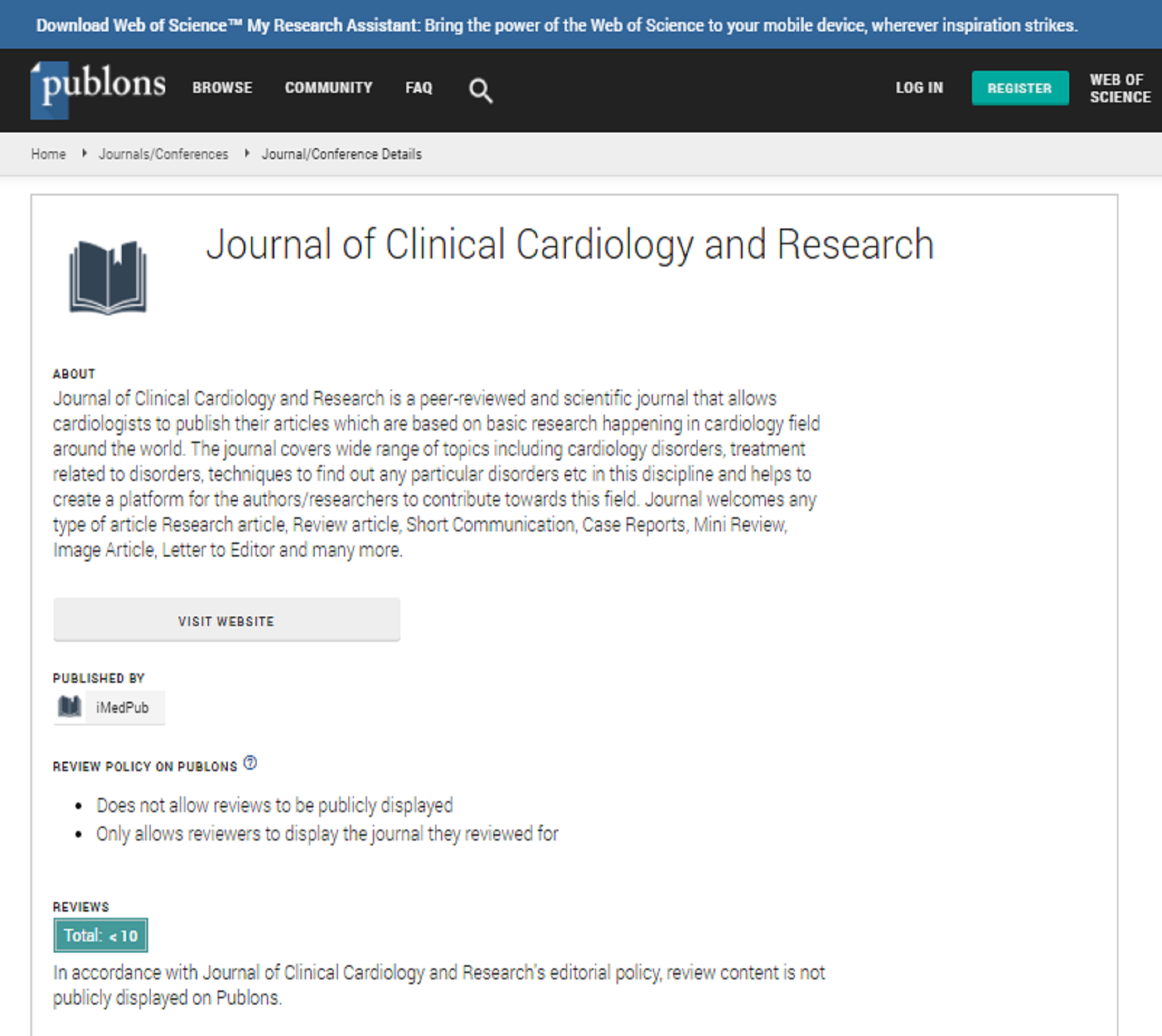
About Journal of Clinical Cardiology and Research
Recent Articles
-

ONE-YEAR SURVIVAL AFTER ACUTE MYOCARDIAL INFARCTION (AMI): THE EFFECT OF CARE-PATHWAY IN ITALY
Author(s): Belleudi Va, Ventura Ma, Sciattella Pa, Agabiti Na , Di Martino Ma , Di Domenicantonio Ra , Davol Ma and Fusco Da
The relationship between guide-lines adherence and outcomes in patients with Acute Myocardial Infarction (AMI) has been widely investigated considering the phases (emergency, acute, post-acute) of the ... Read More
-

The effects of smoking cessation program including text messaging and telephone counseling using the stages of change for persons with myocardial infarction
Author(s): Nadir Aliyev
The aim of this work - The study of clinical features according to paroxetine in women and the development of methods of treatment. Found that the main clinical features depending on paroxetine in wom ... Read More
-

Antiplatelet agents as a novel therapy of heart failure due to myocardial infarction
Author(s): Naranjan S Dhalla
Background: Although different antiplatelet agents are used for the prevention of thrombosis and treatment of ischemic heart disease, very little information regarding therapeutic potential of these a ... Read More
-

The effect 20 hydroxyeicosatetraenoic acid antagonism on myocardial infarction of metabolic syndrome rats
Author(s): Corinna Lozano
20-hydroxyeicosatetraenoic acid (20-HETE) is an eicosanoid metabolite of that has a wide range of effects on the vascular system such as collateral cell growth, the vascular rebuilding of the heart. M ... Read More
-

Development of DNA aptamers against human heart type fatty acid binding protein for early detection of acute myocardial infarction
Author(s): Pranab Goswami and Ankana Kakoti
Cardiovascular diseases are the single greatest cause of adult mortality globally, constituting about 31% of all global deaths. Detection of cardiovascular diseases has thus emerged as not only a soci ... Read More
Journal Highlights
Google Scholar citation report
Journal of Clinical Cardiology and Research peer review process verified at publons
Abstracted/Indexed in
- Google Scholar
- Publons
Open Access Journals
- Aquaculture & Veterinary Science
- Chemistry & Chemical Sciences
- Clinical Sciences
- Engineering
- General Science
- Genetics & Molecular Biology
- Health Care & Nursing
- Immunology & Microbiology
- Materials Science
- Mathematics & Physics
- Medical Sciences
- Neurology & Psychiatry
- Oncology & Cancer Science
- Pharmaceutical Sciences


